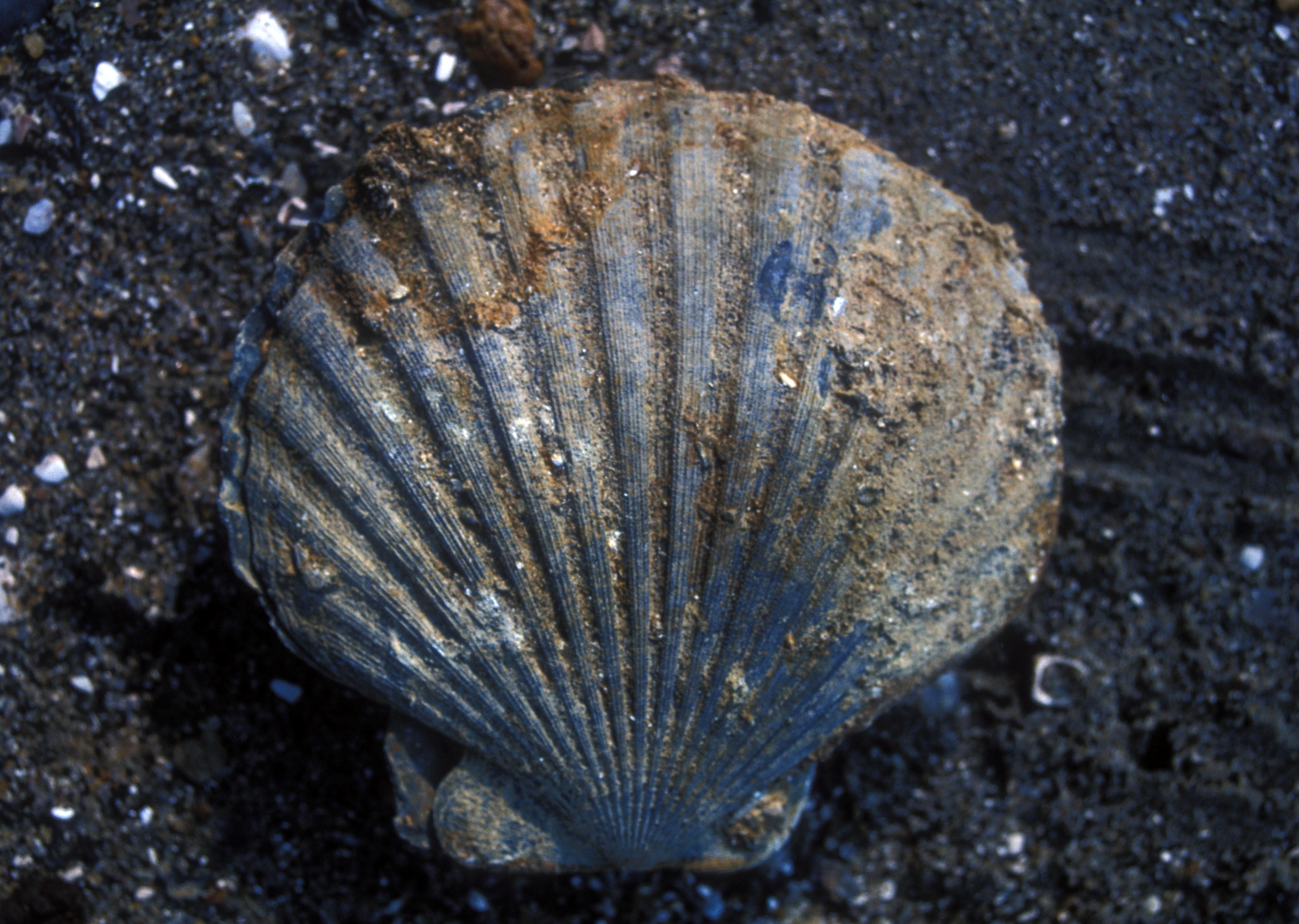This distinctive scallop is the state fossil of Virginia and is the first fossil described from North America in 1687. Chesapecten sp. are commonly found in strata exposed along Coastal Plain cliffs along major rivers in southeastern Virginia and eastern North Carolina. Chesapecten jeffersonius is the index fossil for the Lower Yorktown Formation, and is distinguished by the number of ribs (9 to 12), and a rather rounded shell edge. Immature scallops attach themselves to the sea floor, whereas adult individuals are free-swimming.
Chesapecten is a lineage of scallops that flourished in the shallow seas along the Mid-Atlantic during the Miocene to Pliocene (~8 to 3 million years ago). Different species dominated during different intervals of time: middlesexensis during the Miocene (Eastover Formation); jeffersonius during Early Pliocene (Lower Yorktown Formation, about 4.5 to 4.3 million years ago); and madisonius during Late Pliocene time (Upper Yorktown Formation, about 4 to 3 million years ago). Other scallops lived at the same time, but Chesapectens were the most abundant.


